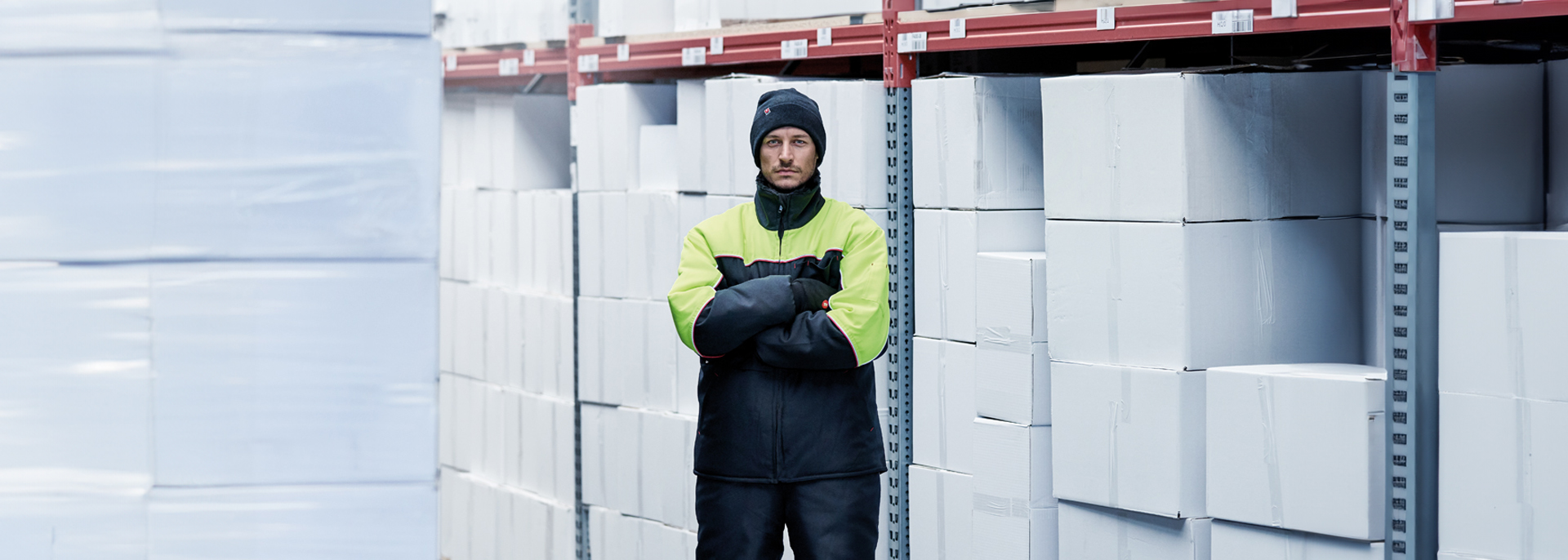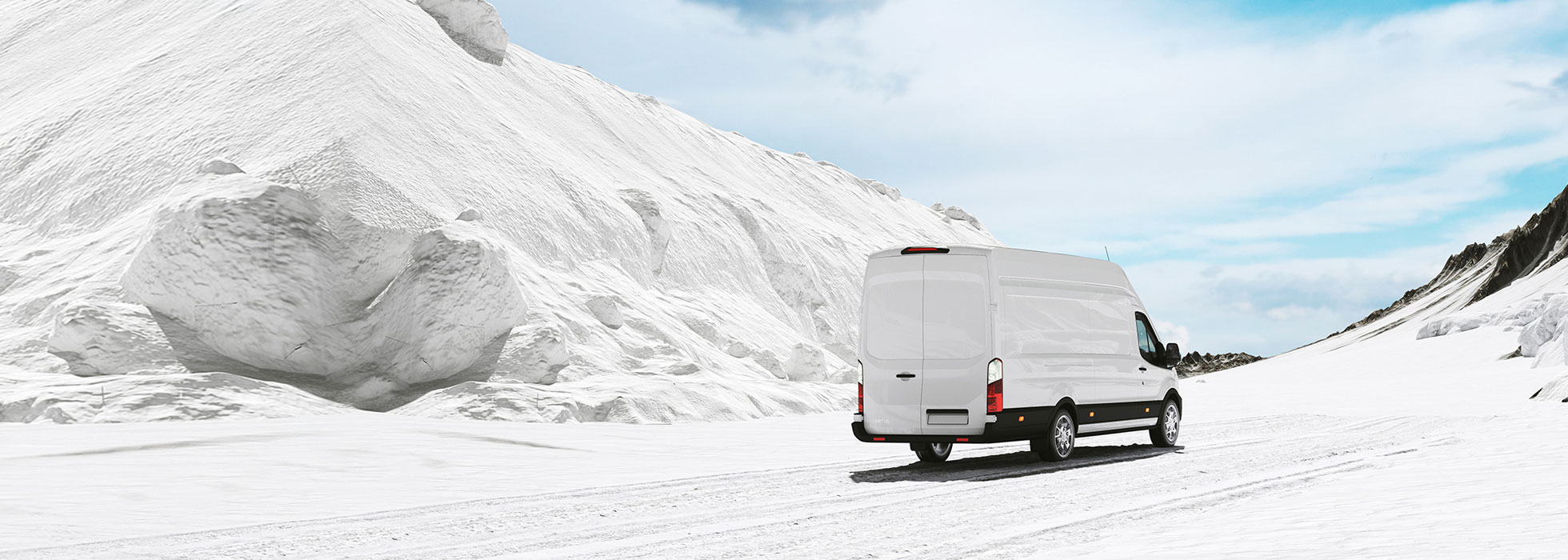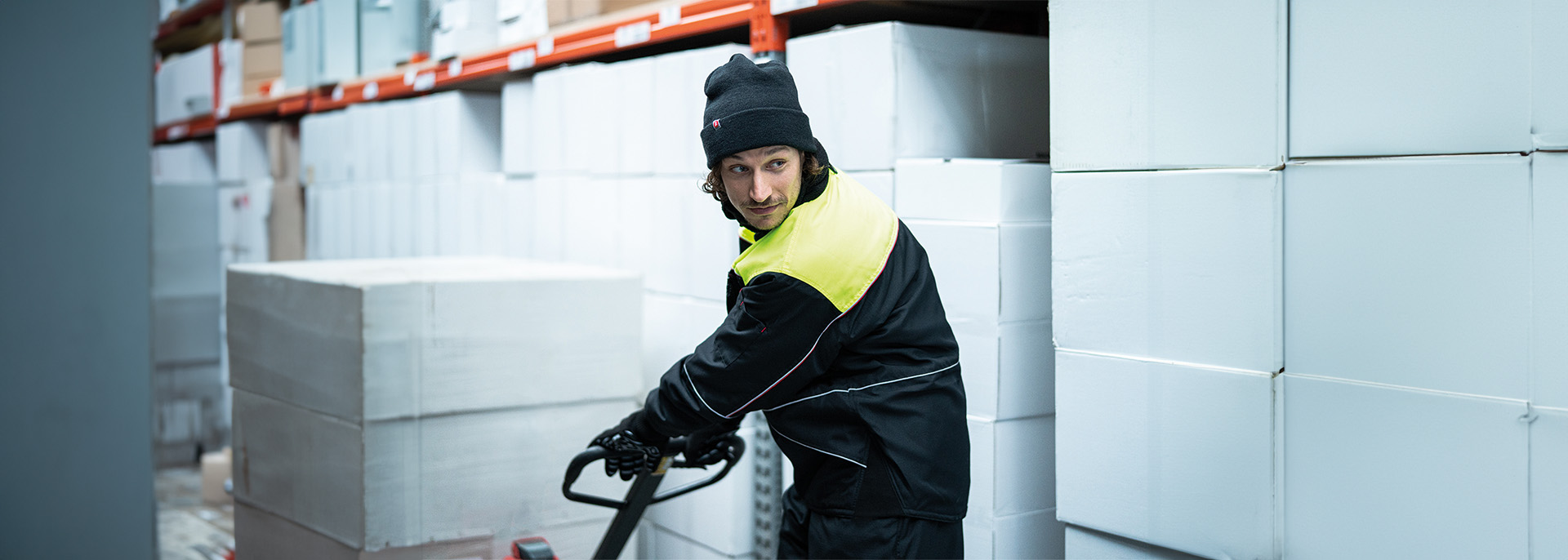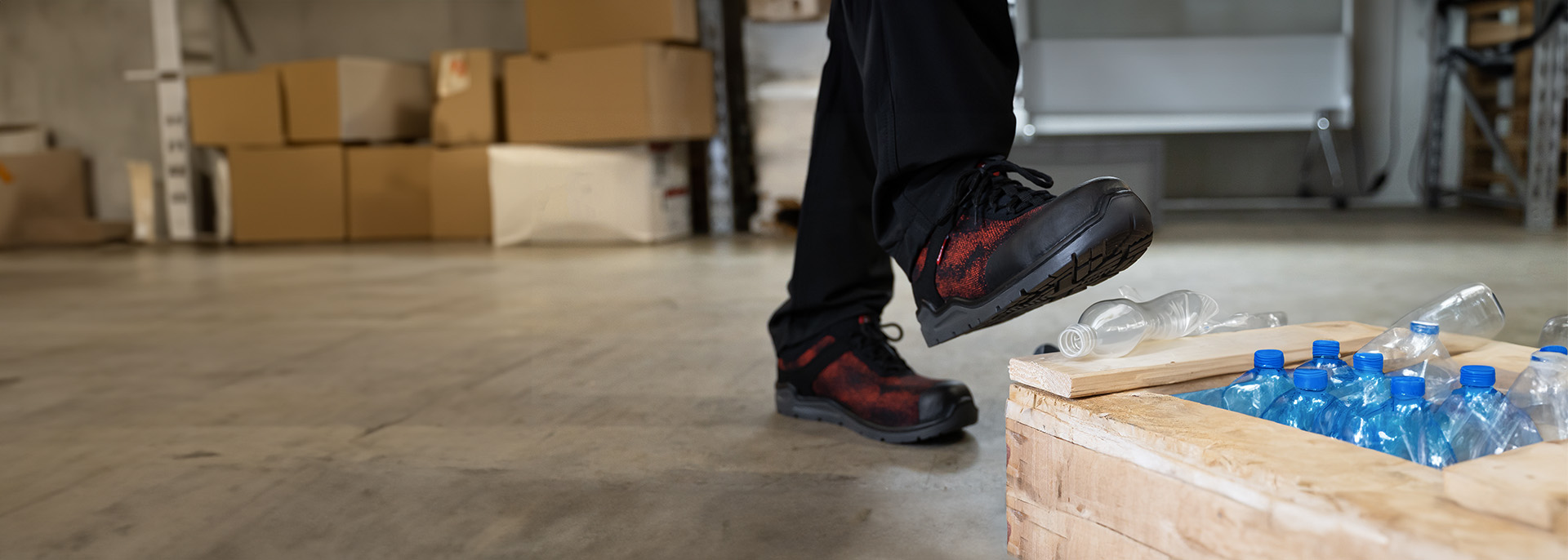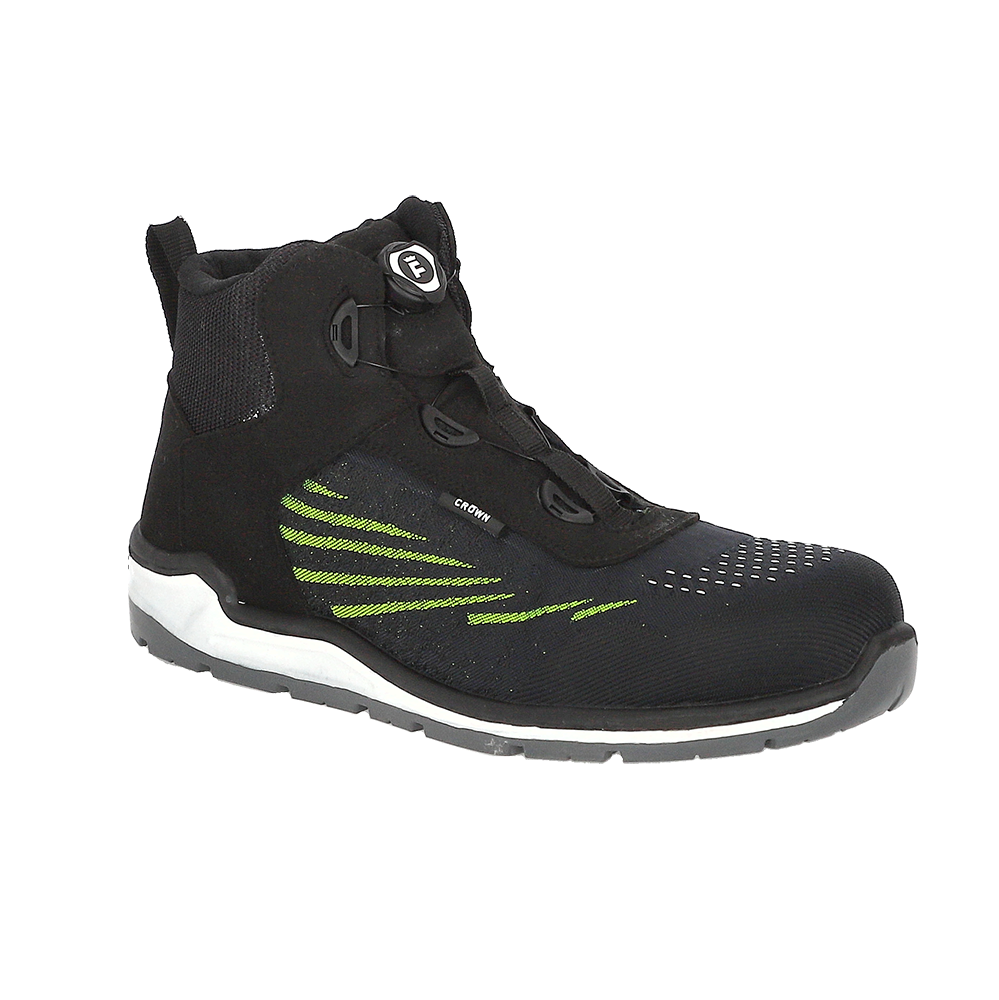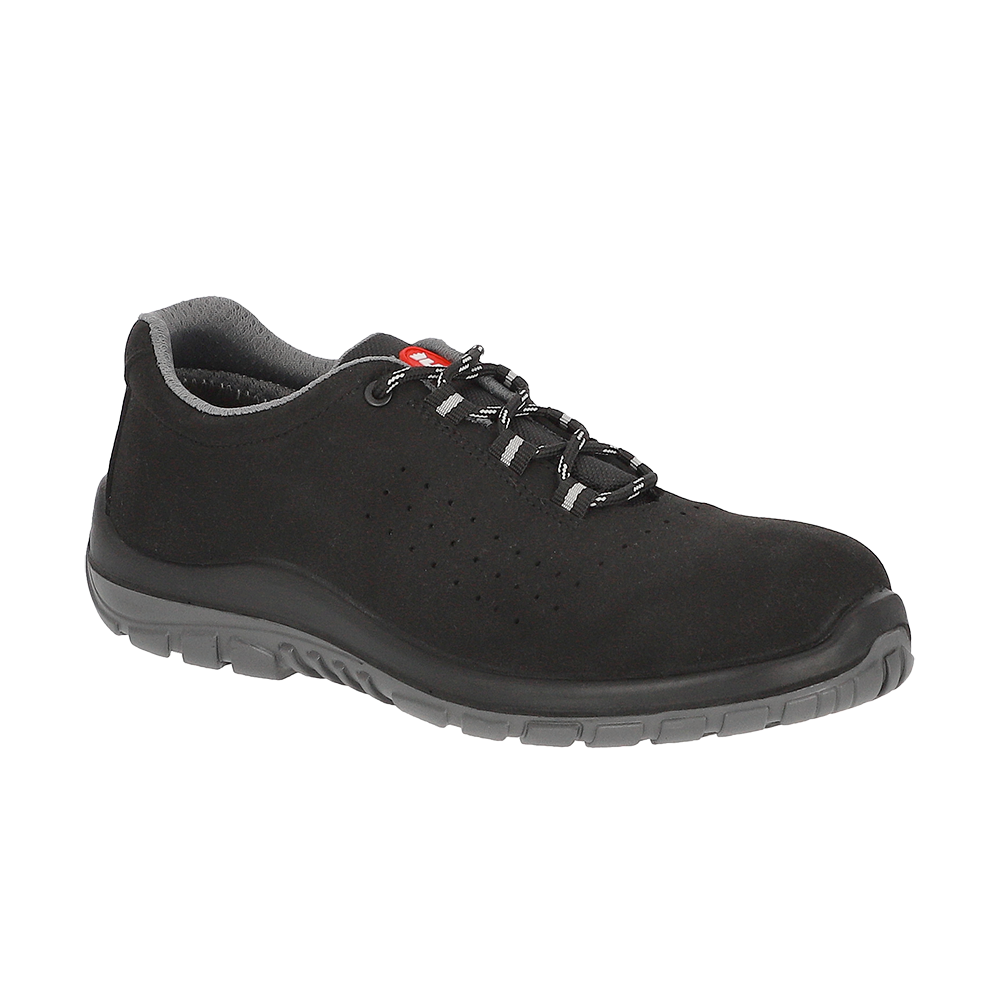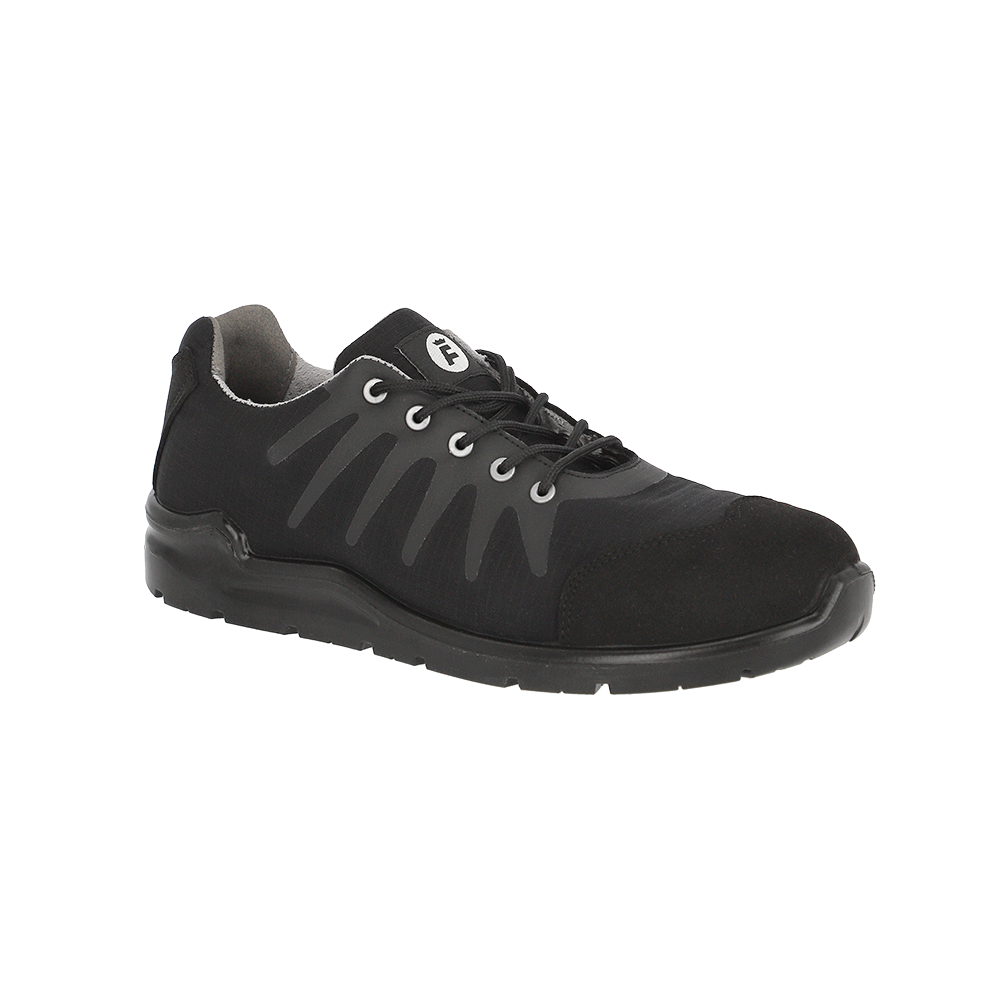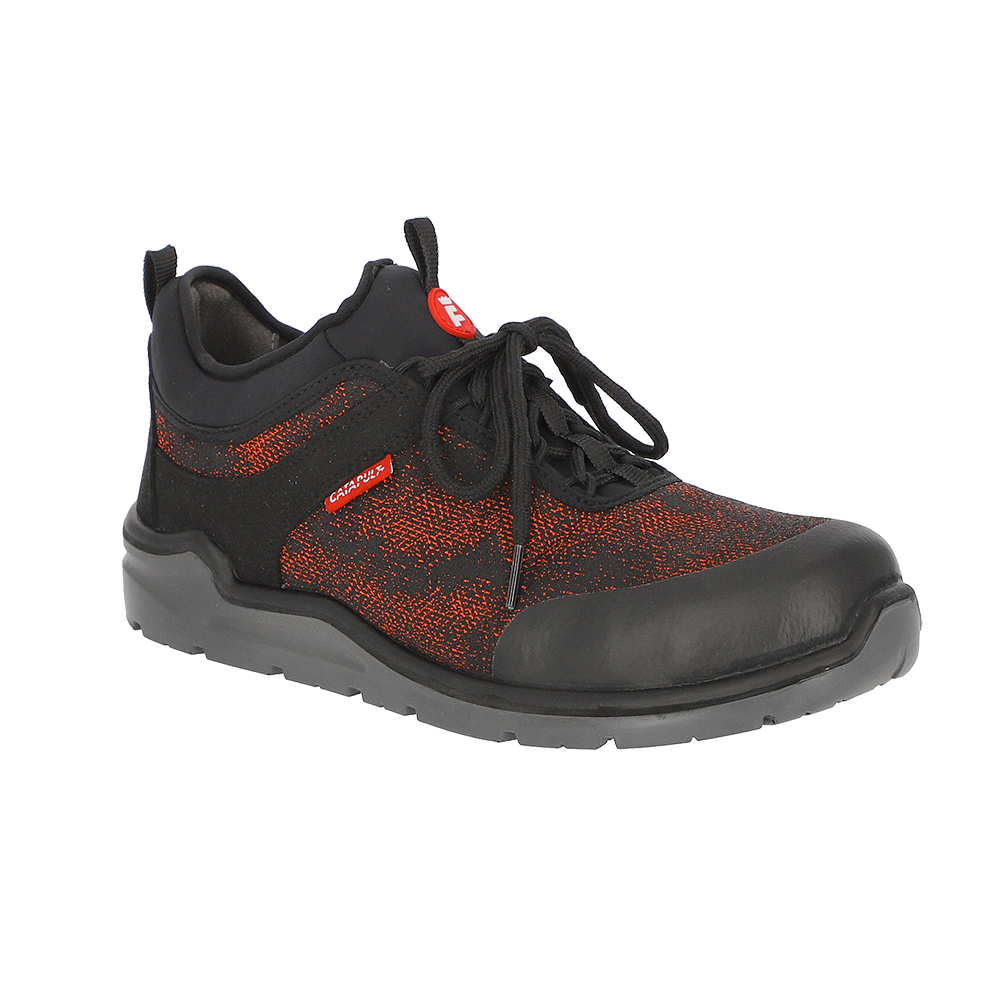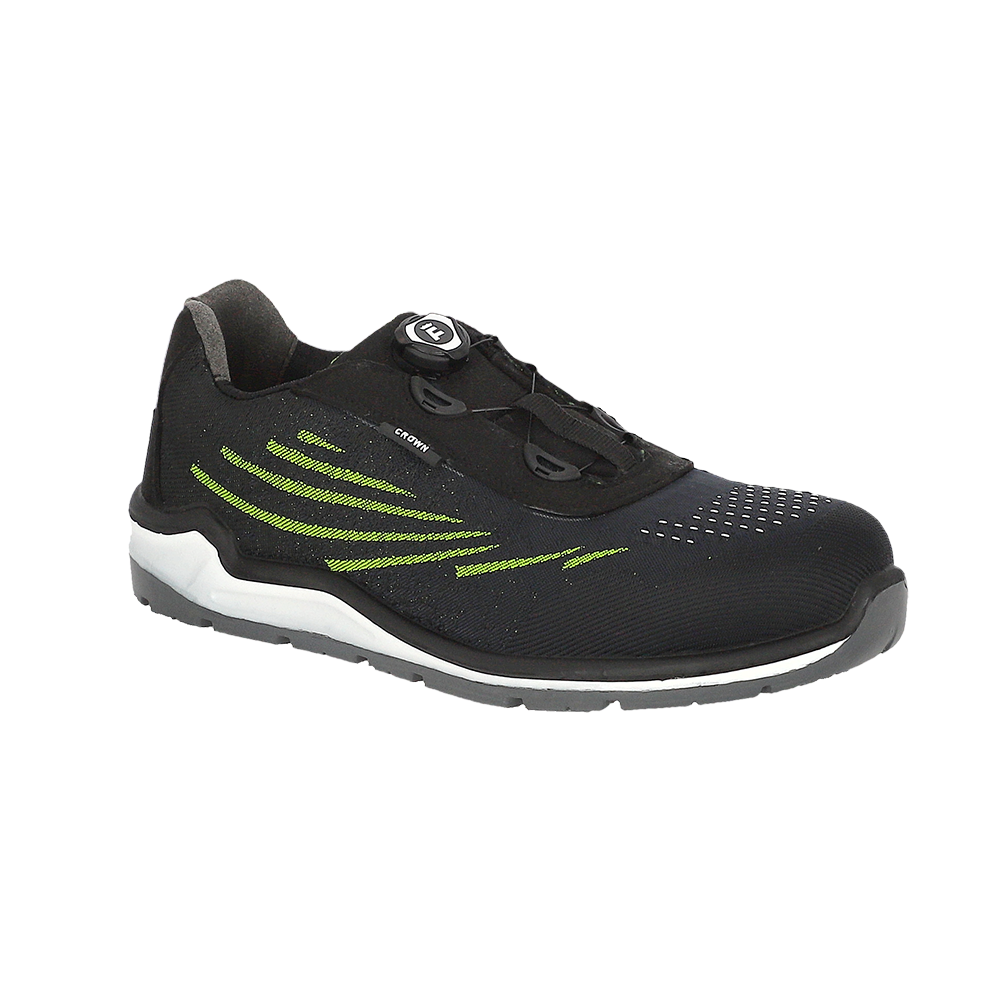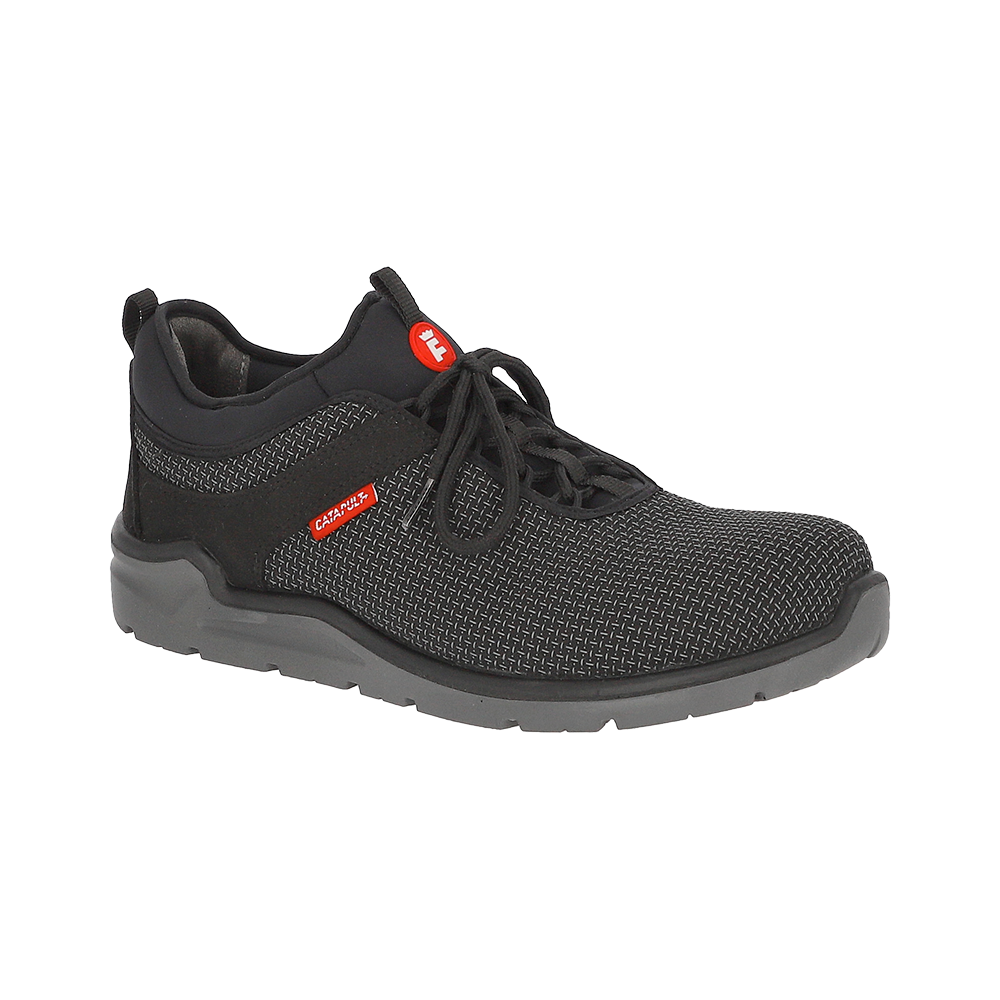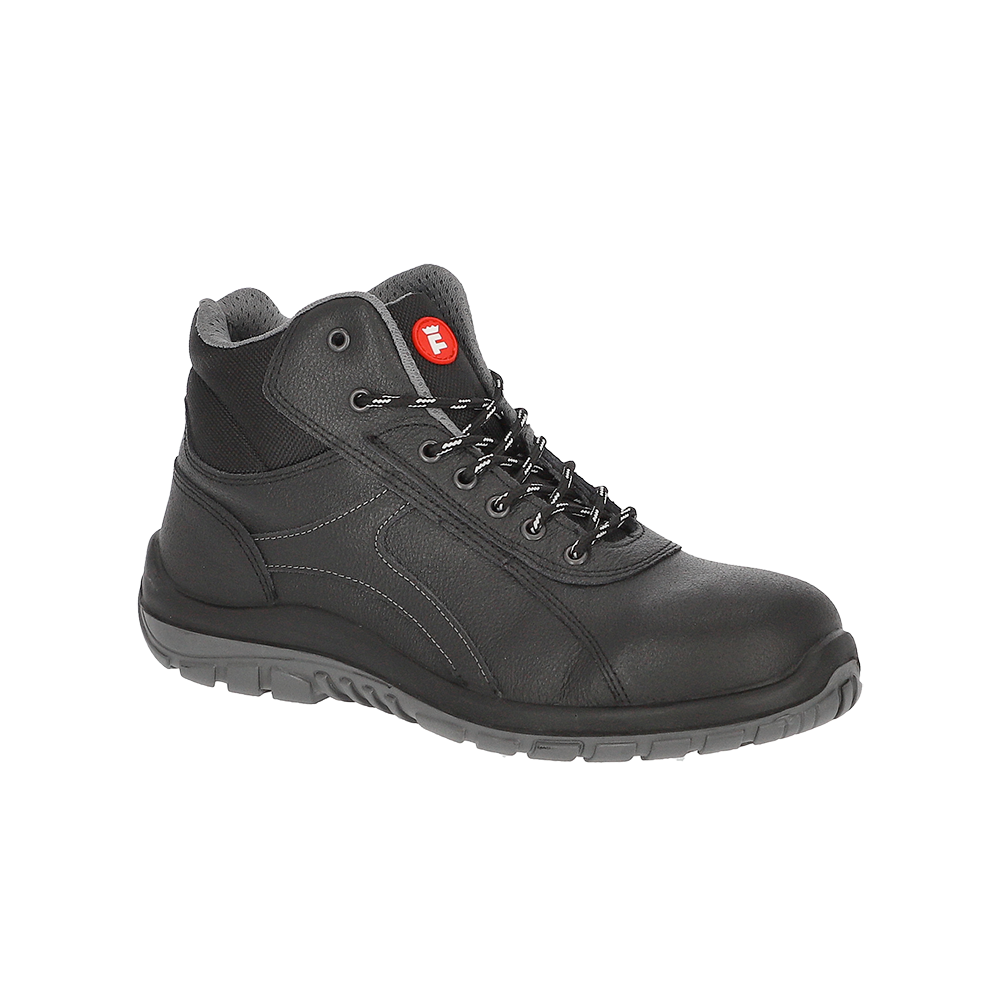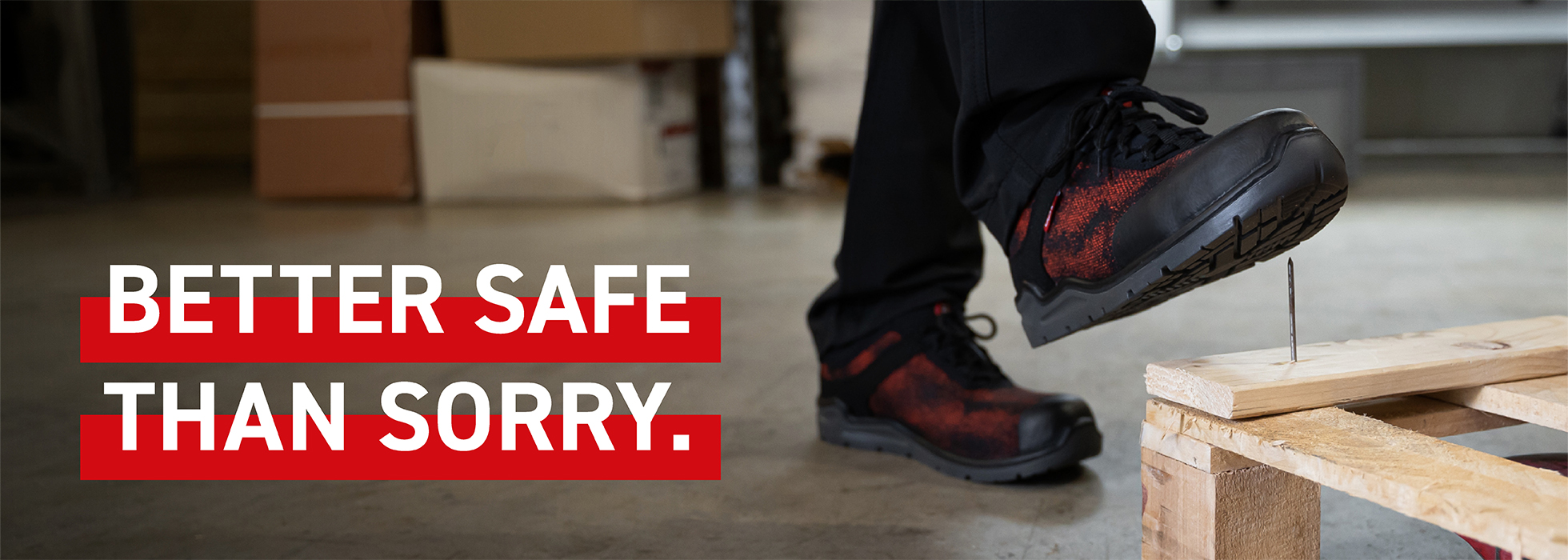
Certifications
Which shoe do I need? - Safety classes at a glance

Optimum protection - from toe to heel.
Different work areas require appropriate work clothing. The same applies to the right protective work shoes. Our safety and work shoes in protection classes S1, S1 P, S2, S3 as well as S5 protect perfectly in industrial areas or logistics environments. In addition to safety shoes, our range also includes work shoes. If you give your best every day in your working life, you need safety shoes that support you in your tasks. Safety shoes that protect, are comfortable and fit perfectly. Choose the right shoe for your work area!
Safety footwear was previously subject to the requirements of the EN ISO 20345:2011 standard. This 2012 standard has now been replaced or updated by a new version, EN ISO 20345:2022.
The EN ISO 20345:2022 version specifies the basic requirements and additional, optional requirements for safety footwear. These include protection against mechanical risks, slip resistance, protection against heat and cold as well as ergonomic features.
Which shoe do I need?
At the latest in professions where foot protection in the form of safety shoes becomes relevant, the question arises for employees or safety officers: What protection class must the safety shoes have? It often turns out that the differences between the most common protection classes are not clear enough. To shed light on this, the structure of the protection classes is presented below.
Safety classes
Safety shoes are classified in two classes.
- Class I (Categories: SB, S1, S1P, S1PL, S1PS, S2, S3, S3L, S3S, S6, S7, S7L, S7S): Shoes made of leather or other materials, except for full rubber or total polymer shoes
- Class II (Categories: SB, S4, S5, S5L, S5S): Total polymer shoes including full rubber shoes
Compared to the old EN ISO 20345:2011 standard, the categories S1P (updated), S1PL, S1PS, S3L, S3S, S6, S7, S7L, S7S, S5L, and S5S have been added.
If you have a foot protection that only meets the basic requirements, you have an SB safety shoe. Only in this SB safety category can the heel area be open. If the safety shoe meets additional requirements, it will be classified into various safety classes.
Here is a complete overview of the minimum requirements of EN ISO 20345 for each safety class.
What Are the New Categories?
Two new categories for safety shoes have been introduced:
- S6: These shoes are similar to safety shoes in category S2 but are additionally permanently waterproof due to a special weather protection membrane.
- S7: These shoes meet the standards of safety shoes in category S3 but are permanently waterproof due to a special weather protection membrane. Additionally, there are new variants S7L and S7S, where the waterproofness (WR) is already integrated.
The changes to water resistance (WR)
In the EN ISO 20345:2011 standard, safety shoes in category S2 or S3 had a water-repellent upper material (WRU), where only the material itself was tested. Water could still penetrate through the seams. The new standard replaces WRU with WPA (Water Penetration and Water Absorption) and WR (Water Resistance). These new markings test not only the upper material but the entire shoe to ensure that no water penetrates.
New features in Slip Resistance (SR)
The new EN ISO 20345:2022 standard has abolished the SRA, SRB, and SRC markings for slip resistance. Instead, every shoe must meet a basic slip resistance requirement on ceramic tiles with a detergent solution, but this is no longer marked separately.
Shoe soles can optionally undergo an additional test with glycerin on ceramic tiles. If they pass, they receive the SR marking for the highest level of slip resistance. Shoes according to the old standard retain their markings (SRA, SRB, or SRC) until their certificates expire. Shoes with special features such as cleats will be marked with a special symbol (Ø).
New requirements for perforation resistance
The EN ISO 20345:2022 standard introduces a more precise differentiation regarding puncture protection, now called "resistance to puncture," to clarify that safety shoes do not offer absolute protection against punctures.
In the past, puncture protection was simply marked with a "P," without specifying the material of the protection. The EN ISO 20345:2022 standard precisely defines the material of the puncture-resistant sole and the diameter of the test nail.
The measurement is conducted using a conical test nail.
The new markings are:
-
P – Metallic sole made of steel (S1P, S3, S5, S7)
- Test nail diameter: 4.5 mm with a conical tip
- Puncture force: at least 1100 N
-
PL – Non-metallic textile sole according to basic requirements (S1PL, S3L, S5L, S7L)
- Test nail: 4.5 mm with a conical tip
- Puncture force: at least 1100 N
- No delamination at test points
-
PS – Non-metallic textile sole according to higher requirements (S1PS, S3S, S5S, S7S)
- Test nail: 3 mm with a conical tip
- Puncture force: at least 1100 N (average of four tests)
- No delamination at test points
Safety shoes SB
Shoes with this class are basically normal shoes, which are provided with a protective cap, which is certified according to DIN EN 12568. Thus, shoes of this class are the simplest models. However, due to the low level of protection, the field of application of these shoes is relatively limited.
Safety shoes S1
Safety shoes of protection class S1 must meet the minimum requirements. The upper material and lining must be tear and abrasion resistant and permeable to water vapor. The basic equipment includes a protective toe cap that can withstand an impact of at least 200 joules and a pressure of at least 15 kN. This means that the work shoes can withstand a weight of 20 kilograms from a drop of one meter. If the drop height is zero, the toe guard can withstand about 1,500 kilograms. The toe cap can be made of steel, aluminum, plastic or carbon. If the protective cap is damaged because an object has fallen on the foot, it may no longer fulfill its protective function. Then the work shoes must be replaced as soon as possible.
S1 work shoes also have an antistatic sole. It ensures that electricity can leave the body and thus prevents small electric shocks. The sole must be resistant to oil and gasoline. The heel must be closed, which provides a stable all-round protection. This includes sandals that are closed at the back. Clogs, however, do not belong to this category, because they only correspond to the "SB" category, the basic equipment.
Safety shoes in this protection class are mainly used in wholesale, canteen kitchens, bakeries or by truck drivers who need lightweight shoes and occasionally perform loading activities.
The other protection classes are based on protection class S1. These are extended by a wide range of properties, which are explained in more detail below.
Safety shoes S1P
This protection class has the same properties as protection class S1. The suffix "P" stands for "penetration proof". Thus, shoes of this protection class are supplemented by a penetration protection. An additional midsole made of stainless steel or synthetic fibers is incorporated.This addition is important when there is a threat of danger from below. Pointed objects lying around, such as nails and similar objects, which can threaten the health of the foot from below.
Areas of application are, for example, in joiner's workshops and trades where there is also a threat of danger from below, but the working environment tends to be dry.
Safety shoes S2
In protection class S2, the safety shoes must meet all requirements from class S1. However, protection class S2 has no penetration protection. In addition, the shoe is subject to requirements regarding water penetration and water permeability. Water penetration (expressed as the increase in mass of the textile plate after 60 minutes) must not exceed 0.2 g and water absorption must not exceed 30%.
Protection class S2 is mainly worn in warehouses, automotive workshops or during difficult activities in a more humid environment such as concrete work or processing of chemical substances.
Safety shoes S3
An S3 shoe meets the requirements of protection class S2. The shoe is supplemented by a penetration protection as well as a profiled outsole as for example in the SAFETY-GRIP series - for improved slip and slip resistance. In the sole version with a 6mm tread thickness, additional edges and bevels ensure excellent grip and stability, even under extreme outdoor ground conditions. Class S3 safety shoes are suitable for hard work on construction sites, in warehouses when handling lift trucks, pallets, forklifts or even in civil engineering.
S1, S2 and S3 in comparison
If you look at the three main classes again, you will notice that the protection of the feet increases with higher number of the class. So S3 has the highest protection, especially protection against nail penetration. S2 and S3 protect in wet conditions, S1 does not have these two features.
These are the differences at a glance:
- S1: protective toe cap
- S1P: toe cap + protection against nail penetration
- S2: toe cap + waterproof
- S3: toe cap + waterproof + penetration protection + profiled sole
Safety Shoes S4 and S5
These classes are identical to S2 and S3 but must be fully enclosed and waterproof. Due to these requirements, shoes in these classes are almost exclusively found as rubber boots. A significant advantage of these materials is their resistance to chemicals and their easy maintenance. Class S5 also includes puncture protection compared to S4.
The basic requirements and necessary additional requirements at a glance:
| Category | Classification | Toe cap | Closed heel area | Antistatic (A) | Treaded sole class I: Profile height ≥ 2,5 mm | Treaded sole class II: Profile height ≥ 4 mm | Energy Absorption in heel area (E) | P: Metal midsole | PL: Non-metallic midsole | PS: Non-metallic midsole | Water Resistance (WR) | Water Penetration and Water Absorption (WPA) – at least 60 Min. |
|---|---|---|---|---|---|---|---|---|---|---|---|---|
| SB | I or II | ✔ | Open heel area possible | (✔) | (✔) | (✔) | ||||||
| S1 | I | ✔ | ✔ | ✔ | (✔) | ✔ | ||||||
| S1P | I | ✔ | ✔ | ✔ | (✔) | ✔ | ✔ | |||||
| S1PL | I | ✔ | ✔ | ✔ | (✔) | ✔ | ✔ | |||||
| S1PS | I | ✔ | ✔ | ✔ | (✔) | ✔ | ✔ | |||||
| S2 | I | ✔ | ✔ | ✔ | (✔) | ✔ | ✔ (then it is S6) | ✔ | ||||
| S6 | I | ✔ | ✔ | ✔ | (✔) | ✔ | ✔ | ✔ | ||||
| S3 | I | ✔ | ✔ | ✔ | ✔ | ✔ | ✔ | ✔ (then it is S7) | ✔ | |||
| S3L | I | ✔ | ✔ | ✔ | ✔ | ✔ | ✔ | ✔ | ||||
| S3S | I | ✔ | ✔ | ✔ | ✔ | ✔ | ✔ | ✔ | ||||
| S7 | I | ✔ | ✔ | ✔ | ✔ | ✔ | ✔ | ✔ | ✔ | |||
| S7L | I | ✔ | ✔ | ✔ | ✔ | ✔ | ✔ | ✔ | ✔ | |||
| S7S | I | ✔ | ✔ | ✔ | ✔ | ✔ | ✔ | ✔ | ✔ | |||
| S4 | II | ✔ | ✔ | ✔ | (✔) | ✔ | ✔ | ✔ | ||||
| S5 | II | ✔ | ✔ | ✔ | ✔ | ✔ | ✔ | ✔ | ✔ | |||
| S5L | II | ✔ | ✔ | ✔ | ✔ | ✔ | ✔ | ✔ | ✔ | |||
| S5S | II | ✔ | ✔ | ✔ | ✔ | ✔ | ✔ | ✔ | ✔ |
✔ must be fulfilled (✔) can be fulfilled
New and Changed Additional Requirements and Codes:
Additionally, new supplementary requirements for safety shoes have been introduced, focusing on slip resistance, abrasion of toecaps, and grip on ladders.
- Toecap Abrasion (SC): A Martindale abrasion test with 8,000 cycles is conducted. After this test, the toecap must not show any holes that penetrate through its entire thickness.
- Grip on Ladders (LG): The outsole in the joint area of the safety shoe must have a cross-profile with a height of at least 1.5 mm. This ensures better grip on ladders.
- Fuel Resistance (FO): The fuel resistance test is optional in the new standard and is no longer mandatory.
Explanation of Additional Values
When looking at the safety classes of shoes, additional details are often listed behind the protection classes, e.g., EN ISO 20345 S1 P SRC.
Meaning of the Abbreviations:
- P: Perforation Resistance (Steel midsole)
- PL: Perforation Resistance (Non-metallic midsole, large nail)
- PS: Perforation Resistance (Non-metallic midsole, small nail)
- C: Conductivity
- A: Antistatic
- FO: Resistance to Fuel and Oil
- HI: Heat Insulation
- CI: Cold Insultaion
- E: Energy Absorption (in the heel area)
- ESD: Electrostatic Discharge (Standard IEC 61340-4-3:2017)
- WR: Water Resistance
- M: Metatarsal Protection
- AN: Ankle Protection
- WPA: Water Penetration & Absorption
- CR: Cut Resistance
- HRO: Heat Protection up to 300 °C Shape
- B: Ankle/Medium High Shoes
- LG: Ladder Grip
- SC: slip resistance on ceramic tile floor with NaLS
- SR: slip resistance on steel floor with glycerine
Tips for wearing work shoes
It is important that your work shoes enclose your feet well. Wearing shoes that are too large or too small will result in less strength, stability and comfort. Do you wear insoles? Check to see if standard insoles can be removed from work shoes. This will increase comfort. Wearing the right socks (e.g. thermal socks) can also increase comfort.
Standards at a glance
This European Standard DIN EN 12568 specifies the requirements and test methods for toe caps and penetration resistant insoles used in professional footwear (as described e.g. in DIN EN ISO 20345 to DIN EN ISO 20347).
Safety footwear complies with the EN ISO 20345 standard.
- Protection feature: steel toe cap or plastic toe cap whose protective effect is tested with a test energy of 200 joules.
- If your safety shoe also meets other requirements (see additional values, it is designated by the different safety classes.
- classifies the safety classes SB, S1, S1P, S2, S2P, S3, S4 and S5.
Occupational footwear is characterized by EN ISO 20347.
- Protection feature: without protective cap, but e.g. anti-slip, anti-static, etc.
- Suitable for work areas where there is only a low risk of injury.
Related products


